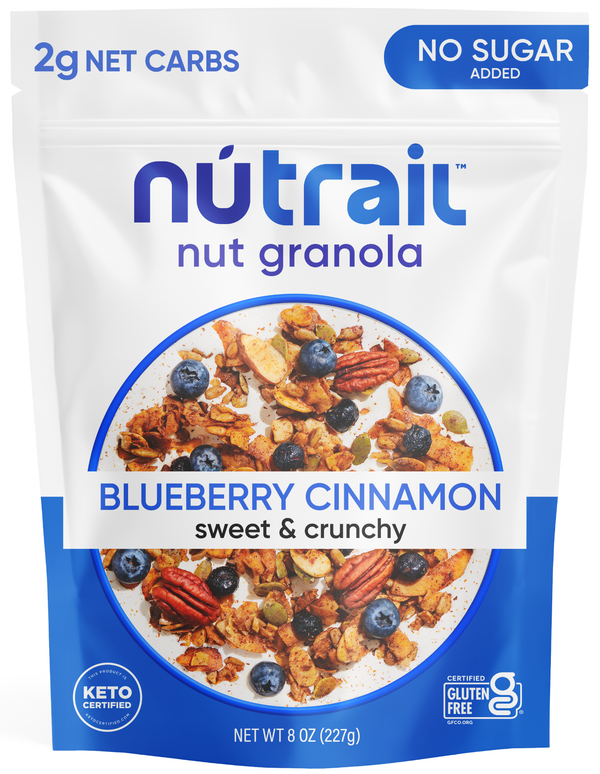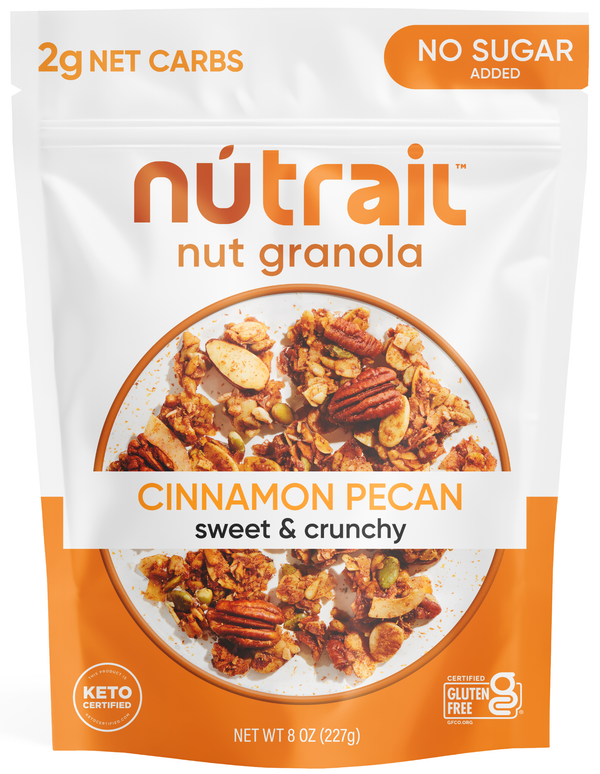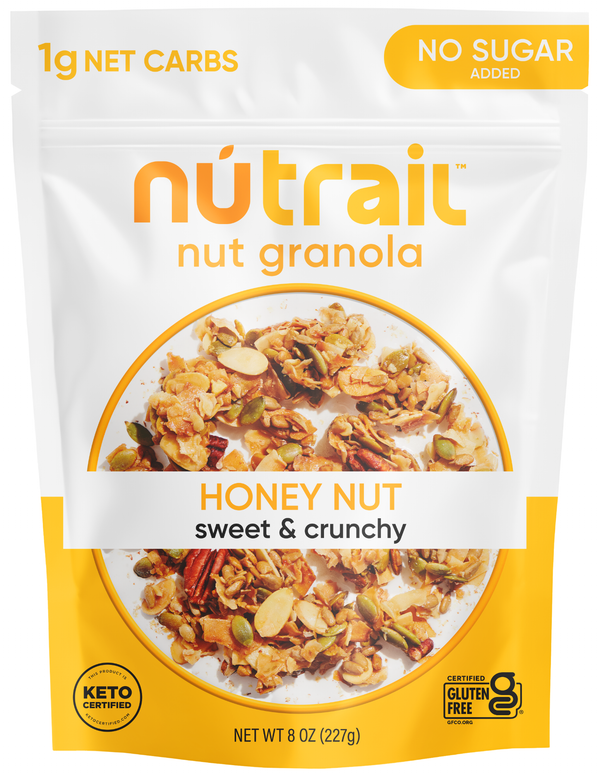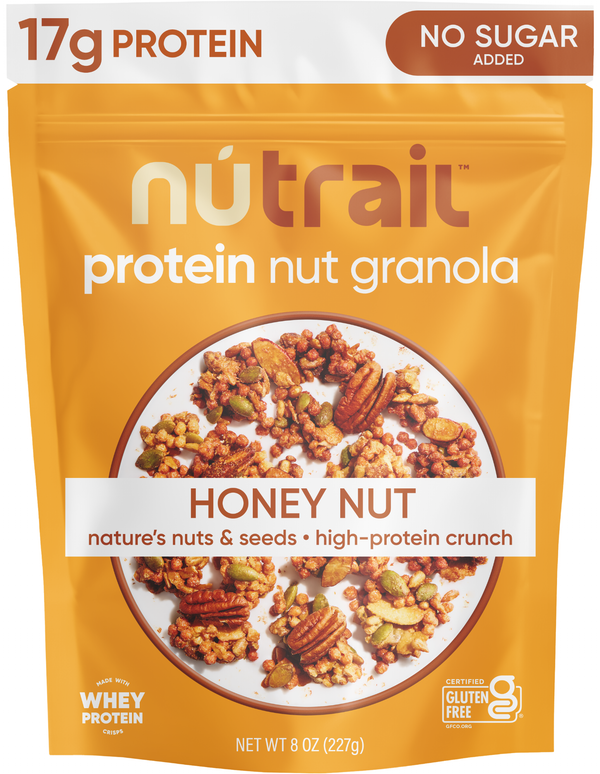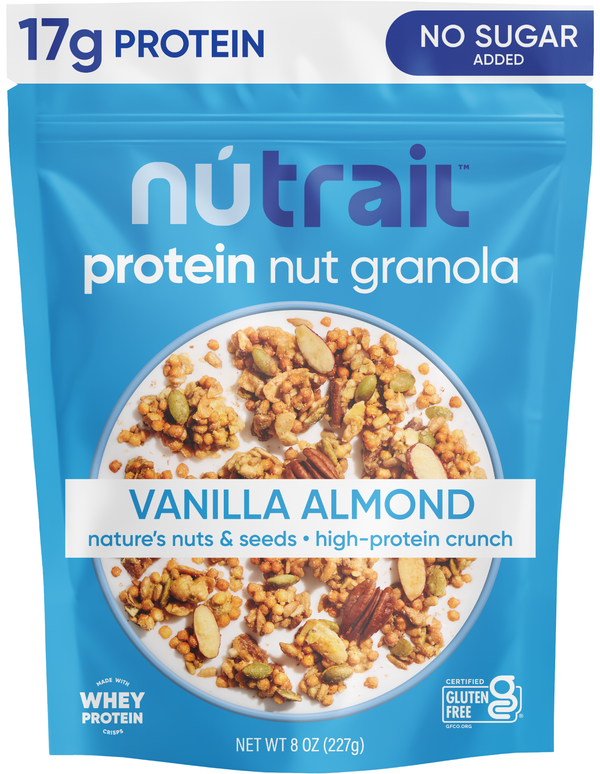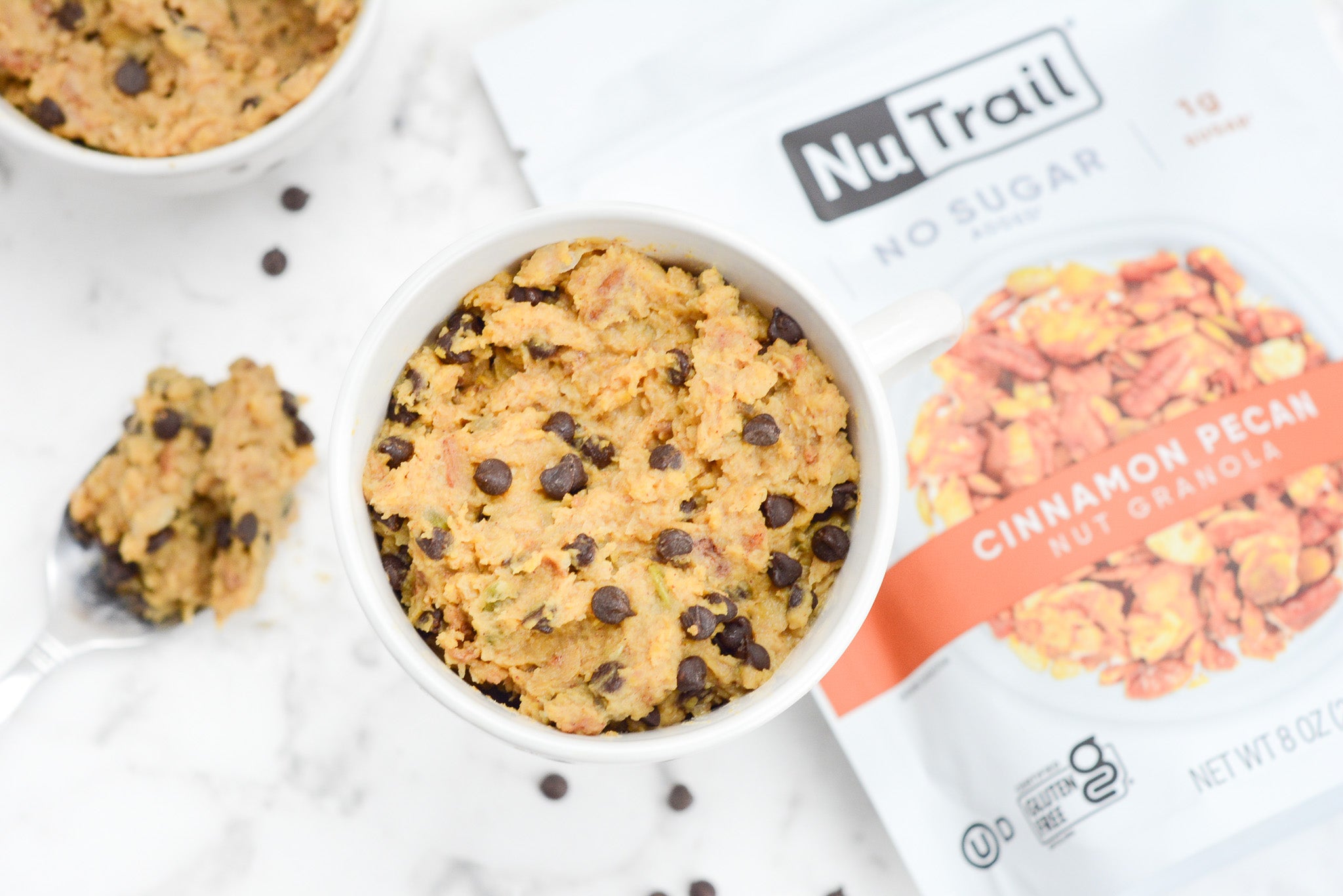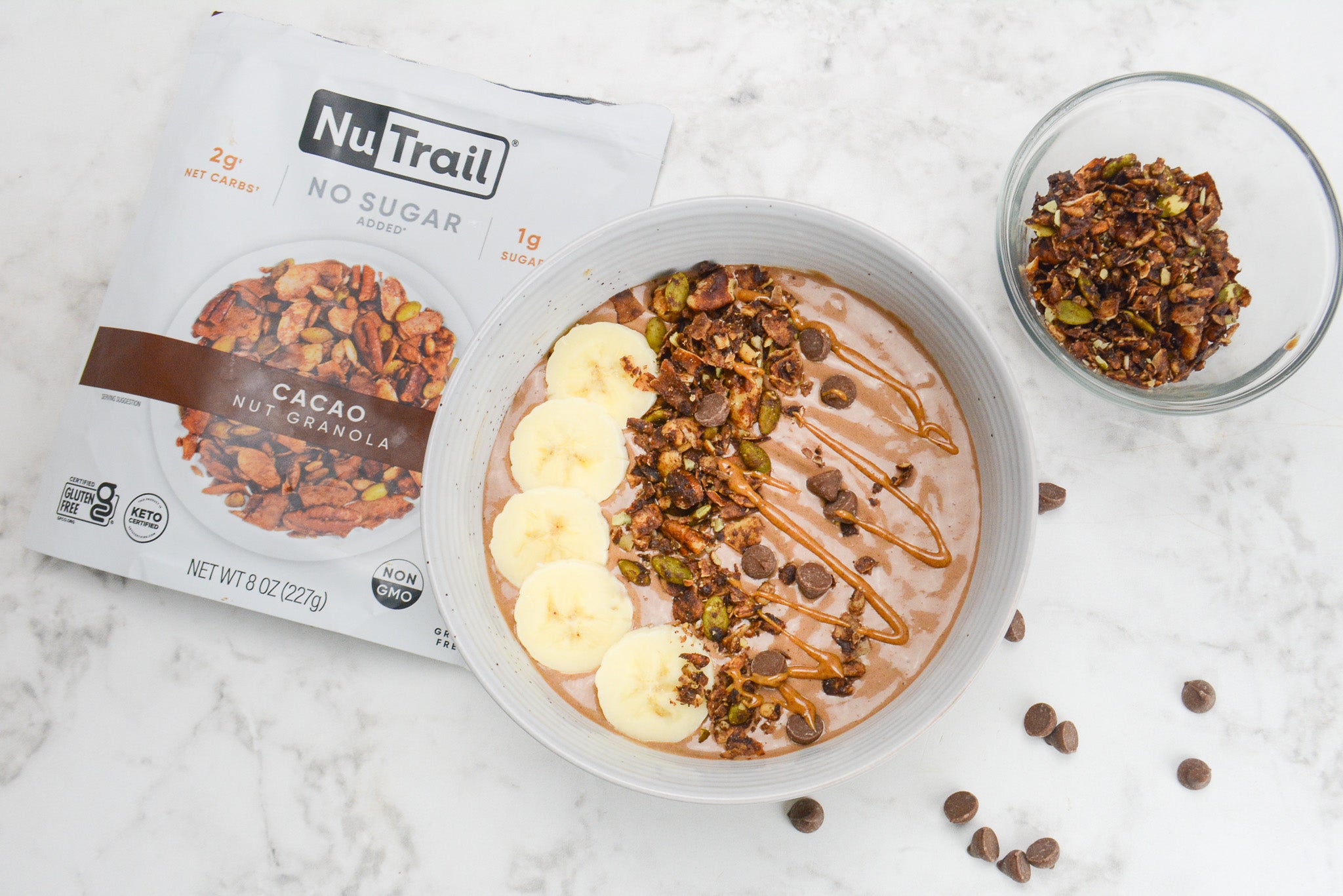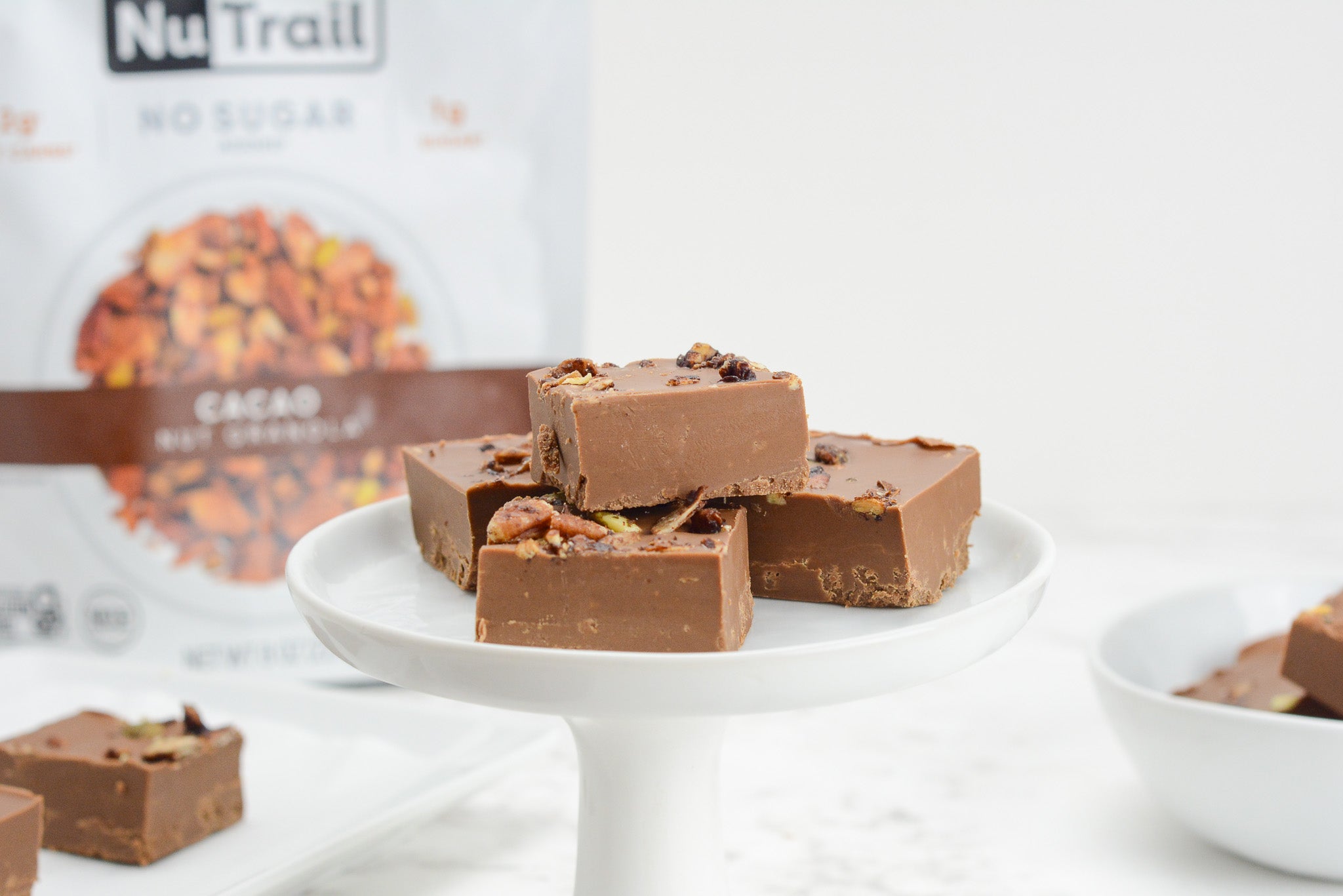
Consuming 75% fat at every meal sounds like it may be pretty okay at first. (Bacon and cheese at every meal? Sign me up!)
But after a while, keto fatigue becomes a little too real. We aren’t talking about actual fatigue, as in being tired because of how you’re eating — quite the contrary. In fact, one of the benefits of the keto diet is an increase in energy levels.
What we are talking about is the fatigue of modifying every recipe, of refusing food at dinner parties or restaurant outings, of passing up your favorites (pizza, pad Thai, and garlic mashed potatoes), all in the name of achieving and maintaining ketosis.
Luckily, there are options beyond the standard keto diet that may allow you the benefits of both. Perhaps the high protein keto diet, the cyclical keto diet, the targeted keto diet, or a plant-based keto diet may be a better fit for your lifestyle.
NuTrail — Keto Granola, Biscuits, Bread and Baking Mixes
There is more than one way to trim the fat.
The keto diet is on the rise with popularity. Its praises can be found on the cover of every tabloid magazine and health and wellness journal.
For many, however, a full-fat, zero-carb diet may not be ideal nor healthy for the long term.
Fortunately, there are different types of the keto diet that may be more doable. This article will explain the nuances of four variations of the keto diet. You may find that having a bit more flexibility with being in and out of ketosis is just what you need to achieve long-term success.
Read on for more info on each variation so you can determine which is the best option for you!
To understand the keto diet’s possible variations, one must first have a steady grasp on the standard keto diet. What is it? How does it work? What is the point of it? Gather round, dear readers. We are going to lay it all out for you.
1. Standard Keto Diet
From the top. The keto diet (aka the ketogenic diet) is a diet that induces the metabolic state of ketosis.
This happens when your body switches from consuming glucose for energy to consuming fat.
When this occurs, your body produces ketones, which become an alternative energy source for your body. You can induce this fat-burning state by restricting your carbohydrate intake.
To be successful with any method or variation of the keto diet, you will need to understand your current and target macro count.
“My what?!”
Don’t worry, it isn’t complicated. Macros are essentially dietary building blocks. Every single thing you eat can be categorized as one of three macros.
Everything is either a carbohydrate, a protein, or a fat. With the standard keto diet, your macros will be right around 5% carbohydrates, 20% proteins, and a whopping 75% fat. The 5% of carbohydrates will easily be consumed by those naturally occurring in vegetables.
That means that basically all starches (breads, pastas, potatoes, and the like) are off the menu, and don’t even think about sweets or junk food. Another restriction is almost all fruit.
While they are high in vitamin and mineral content, most fruits are full of naturally occurring sugars (which are metabolized as carbohydrates in your system).
To change or restrict your macros, you will need to have a system for tracking your current intake. Many apps can help, or you can do it the old-fashioned way by writing everything down.
In either case, you need to know where you are to understand where you need to be.
NuTrail — Keto Granola, Biscuits, Bread and Baking Mixes
While the standard keto diet may be a fast track to weight loss success and many other health benefits, there is something to be said about sustainability. We understand that long-term relationships require compromise.
For some, committing to an extremely high fat and nearly a zero-carb diet may not be sustainable, nor may it be healthy long-term.
Luckily, some worthy variations of the keto diet may be better suited for the long haul and may be a better fit for certain lifestyles.
2. High Protein Keto Diet
The high protein keto diet is like the standard keto diet.
Your macro count will be similar in that your largest will be fat, and your lowest will be carbohydrates. In fact, the carb restriction is exactly the same.
You will essentially eliminate carbohydrates from your diet, leaving an allowance of just 5%. As the name suggests, you will consume more protein with the high protein keto diet than you would with the standard.
Protein will comprise 30 to 35 percent of your diet. Therefore, fat will comprise 60 to 65% of your total macros.

With those macro numbers in mind, your protein intake will be about 120 grams or so (depending on your BMI or body mass index).
These should come from healthy, organic, and lean sources whenever possible. Chicken, fish, and whey protein are all great options for getting your protein fill.
NuTrail — Keto Granola, Biscuits, Bread and Baking Mixes
The biggest benefit of the high protein keto diet is that because it is not as excessive with the fat intake, it may be easier to stomach and therefore more practical to maintain long term.
Most proteins are easier on your digestive system than many fats. For example, chicken is easier to digest and better for your skin than dairy. That being said, we (as a species) have evolved to convert excess protein into glucose.
Too much glucose in your metabolic system is precisely what will “kick you out” of ketosis, thus defeating the very goal of the keto diet. Protein takes longer to digest than carbohydrates, so they will keep you full for longer and you may end up eating less overall.
3. Cyclical Keto Diet
If the motto of “everything in moderation” appeals to you, you are probably a great contender for the cyclical keto diet.
This variation is similar to the standard keto diet, only there is an allowance for cheat days. When practicing the cyclical keto diet, you will practice the standard keto diet for five or six days each week and then switch to a higher carb allowance for one or two consecutive days.
You will continuously repeat the cycle. The idea with the carb consumption days is that you are replenishing the glucose reserves in your body. Cyclical keto diet enthusiasts often refer to these days as “refeeding days.”
While this may sound similar to carb cycling (and it is similar), the two diets are not the same. With carb cycling, the dieter never restricts their carb intake enough to achieve ketosis. With the cyclical version, the dieter will aim to be in ketosis for every one of the low-carb days.
This variation of the keto diet is helpful for increasing athletic performance and ability and building muscle mass. Strategically consuming carbs on active days may give you short-term boosts of energy.
NuTrail — Keto Granola, Biscuits, Bread and Baking Mixes
4. Targeted Keto Diet
The targeted keto diet is probably the best choice if you are a bodybuilder, avid gym-goer, or serious athlete.
With this variation of the keto diet, you will undertake the standard keto diet for at least 60 consecutive days.
This will make your body fat adapted and capable of burning fat and using ketones for energy.
After 60 days, your body can occasionally (and under certain circumstances) consume carbohydrates and still produce ketones since you are fat-adapted. Once you have achieved this, you can plan your carb intake strategically.
The targeted keto diet is a more granular version of the cyclical keto diet. You will plan to consume a high-carb snack or meal within 20 minutes before a workout and 20 minutes immediately following a workout. This may protect your body’s muscle mass and be helpful if your goal is to bulk up.
5. Plant-Based Keto Diet

Keto has a reputation for being a carnivore-only phenomenon.
We are willing to bet that it may be challenging to picture a keto meal that doesn’t involve bacon, butter, or cheese.
Well, that is certainly one way to up your fat intake. Many would argue that over time, while delicious, a bacon-and-dairy-heavy diet may not be so healthy. So, a plant-based keto diet may be a good option.
Many plant-based fats are not derived from animals. All nuts and oils are a great (and clean) source of fat. Avocados are also almost all fat. Coconut (and all coconut products such as milk, cream, oil, and even plain coconut meat) is another high-fat plant.
Tofu is high in fat and protein and low in carbohydrates.
NuTrail — Keto Granola, Biscuits, Bread and Baking Mixes
Join our Keto Community on Instagram & Facebook.
Sign up to receive NuTrail emails.
